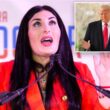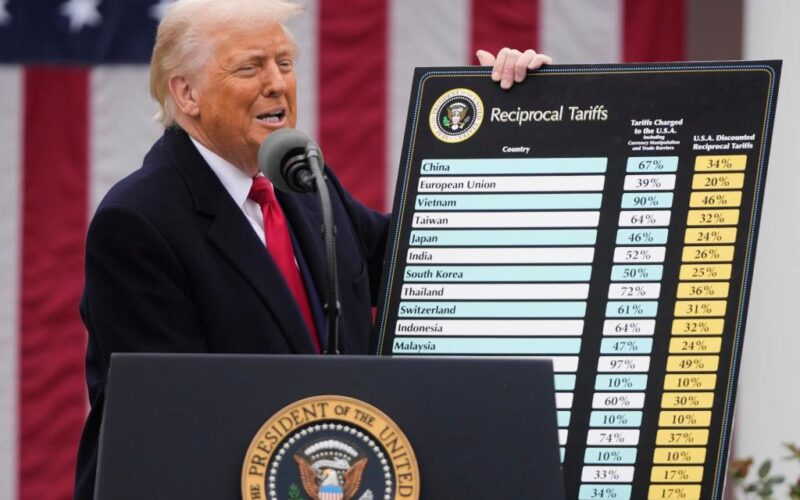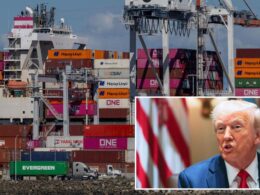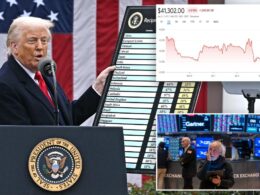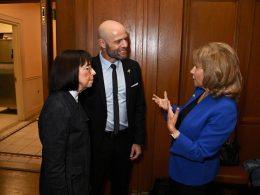President Trump and his team are telling top financiers his tariff plan unveiled today is all about playing the long game — getting trading partners who are clearly protectionist to reduce or remove their barriers to US exports in exchange for us doing the same.
In the end, they claim, everyone will be happy — including the American public that will be on the receiving end of the long-term gain of economic prosperity.
But The Post has learned that top Wall Street execs have been warning the White House and Trump himself in recent days that getting to that long-term gain, while feasible, will not be easy.
It could well result in a significant degree of short-term pain, more than just the markets going haywire. It could ignite something known as stagflation of higher prices ie., inflation, and lower growth, a possible recession. It’s an economic disruption not seen in decades as we upend the global trade ecosystem and play chicken with the rest of the industrialized world over tariffs.
They also explained it will be the biggest existential threat to the Trump presidency, something that will make the controversy surrounding DOGE look like an afternoon of golf at Mar-a-Lago.
Will Trump play that game of chicken? He knows trading partners will respond in kind; US goods will get more expensive overseas and import prices spike. That’s where the stagflation comes in. Everyone I know who knows Trump says he’s committed to the tariff hammer because he believes in his heart that they will rebuild America, bring jobs back to the Rust Belt and as he explained in his press conference, the trade deals we have crafted with even our allies are so unfair.
But you never know what a little stagnation will do to a politician, even one as steadfast as Trump — which is exactly the warning financiers made to the president in recent meetings.
The White House was said to be all ears during these meetings, as Wall Street executives explained the grim details of the short-term tariff pain: Uncertainty over what Trump would announce has stymied business spending for large swaths of the economy, and it will fall further once the tariffs go into effect.
US automakers are readying price hikes because they source much of their parts overseas. Trump announced a 25% tariff on imported autos.
As a Wedbush analyst Dan Ives said Wednesday in a note: “The concept of a US car maker with parts all from the US is a fictional tale . . . tariff policy will cause pure chaos to the global auto industry and will raise prices to the typical Us consumer by $5k to 10K out of the gates.”
Tariffs will impact farmers because we provide grain overseas and to China; our natural gas exports will be hurt, meaning a slowdown in growth on top of spending cuts businesses already enacted before in preparation of the tariff announcement.
That’s the bad news, but here’s what good could happen down the road: Trump’s art-of-the-deal making skills will change the protectionist behavior of our trade partners.
He wants that stuff to stop, and if they do, he announced that he will reciprocate and things go back to normal. Perhaps even better than normal with new trade deals that don’t put US exports at a disadvantage, and bring jobs back home.
His negotiations with China might be a template. He likes President Xi, and he has reason to bargain with him, but he’s enacting 34% tariffs on the country’s imports.
That is until they agree to make a deal.
Trump needs the Chinese to buy other stuff from us. Plus, he wants them to approve his TikTok deal putting it in US hands and the sale of the Chinese run ports at the Panama Canal to a US company. The Chinese, meanwhile, need access to our markets.
Put all that together and it sounds like a great place to start talking and make this short-term pain that’s coming as short as possible.


